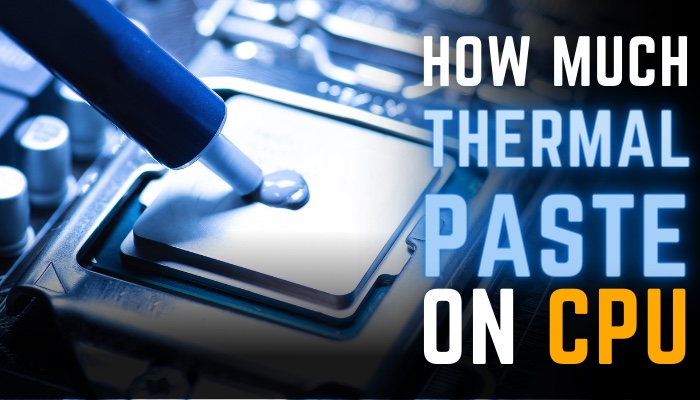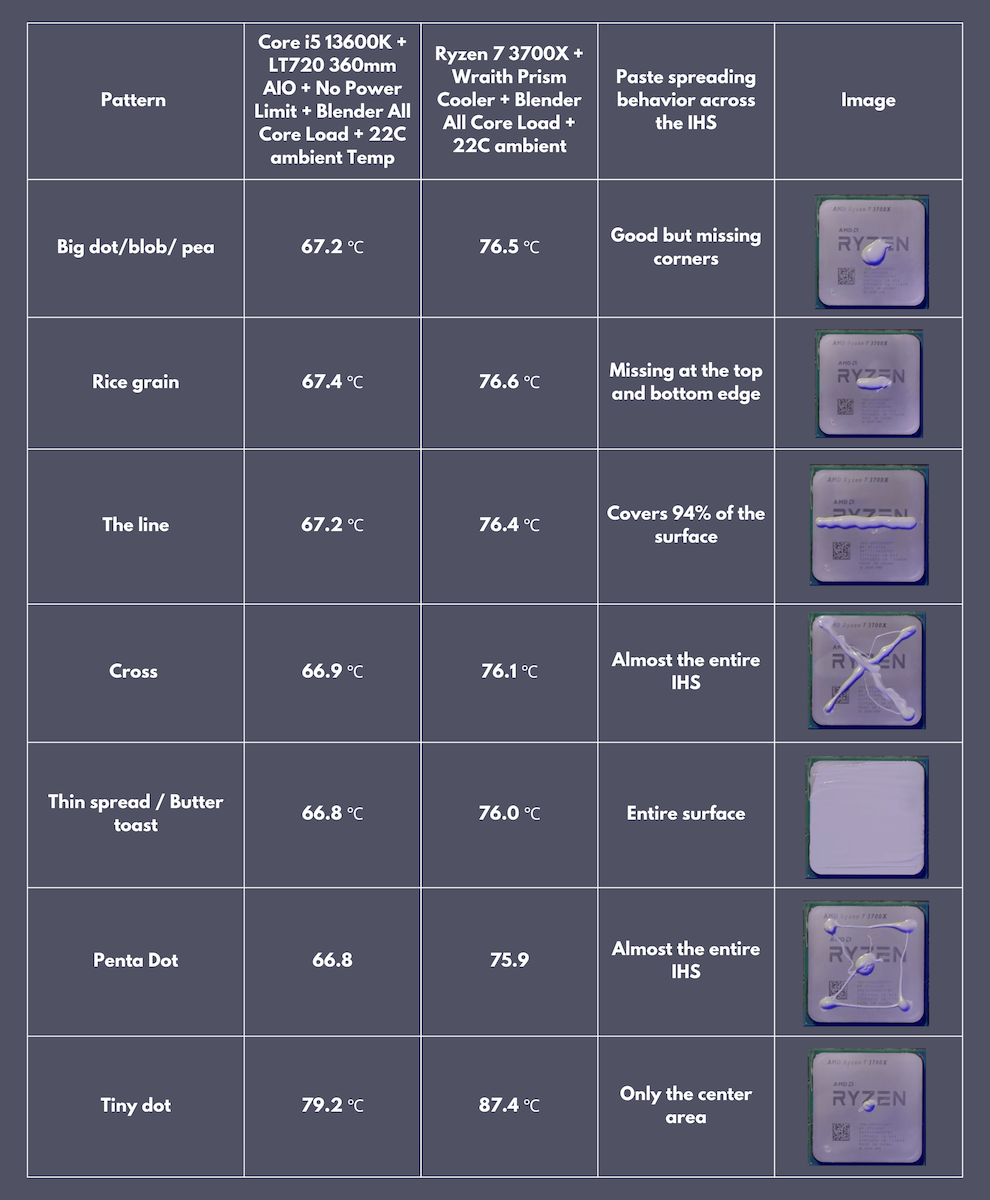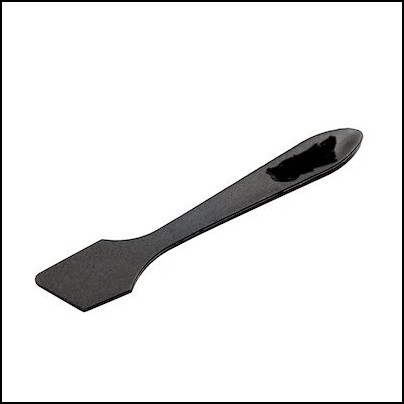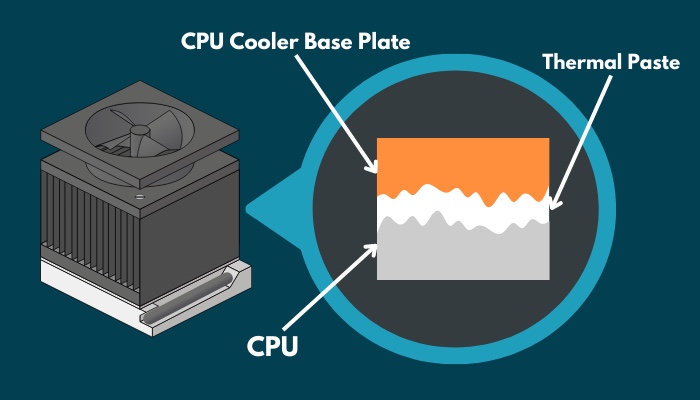So, which one is the correct way, then?
Lets sort it out once and for all.
These shapes ensure great heat transfer from the IHS to the coolers cold plate.

CPUs with Larger IHS, however, require a bit more paste than usual.
But how can I come to this conclusion?
Well, Ive tested extensively with all the common and popular patterns of thermal paste app.

Ive conducted two tests, one with a multi-die chipRyzen 7 3700Xand another with a monolithic dieCore i5 13600K.
For the AMD test bench, Ive used the stock Wraith Prism cooler and DeepCool LT720 360mm for Intel.
Check out the final results, itll surprise you.

Which falls within the margin of error.
So, you really dont have to stress too much about which way you go.
But ensure to putenough amountso that the paste can spread and cover the die area.

Otherwise, therell be heating issues, as you might see with the tiny dot method.
Besides, if it enters inside the socket somehow, you may have a black screen and no post.
Not to mention,too much paste increases the distance between the IHS and the coolers heat transfer plate.
As a result, cooling will be a bit worse.
Not to a deal-breaking degree, by the way.
I find that ridiculous!
Just follow your intuition.
No worries, nothing will break!
Check the paste amount and ensure it meets the minimum threshold.
If you wish to spread it throughout, do not use your finger.
Get a thermal paste applicator instead.
In case the thermal paste sticks with the pins, it can damage your processor and motherboard.
So, confirm to apply it carefully.
And even if it sticks,clean the thermal paste off the CPU pinsto secure the component.
Why Is Thermal Paste Important?
Gladly, thermal paste fills up the unevenness and makes perfect contact to disperse heat.
See, both surfaces are commonly made of copper, nickel, or other heat-dissipating metals.
The irregularities, however, trap air in between the contact area and produces air pockets.
As a result, the passing of the heat is hindered big time.
Not to mention, youll see the CPU hittingTJmaxinstantly when it is put to work.
When the thermal paste is applied, intermittent air obstructions and imperfect contact is gone.
And so the two metal plate acts as a seamless heat conductor.
For this reason, thermal paste utility is mandatory on a CPU.
That being said, I suggest not getting too adventurous and trying to runthe CPU without thermal paste.
How Often Should You Replace Thermal Paste?
You should replace the thermal paste once a year.
Though, the paste can last up to 2 or 3 years, depending on its quality.
Though its essential for the processor,extra thermal paste can potentially damage your CPU.
You know, there are diverse choices of thermal pastes in the market.
Pick one from a reputed brand with a higherWatts Per Meter Square (W/mK)rating.
It, typically, suggests how much heat it is able to pass from a square meter surface area.
FAQs
Is 4g of Thermal Paste Enough?
Yes, 4g of thermal paste is enough to use for multiple applications on a CPU or GPU.
It is quite a lot.
The program between the CPU or GPU and the heat sink requires a tiny amount of paste in general.
Does Thermal Paste Expire?
Yes, the thermal paste can expire.
Ending Remarks
The debate on the amount of thermal paste tool is an everlasting one.
For further queries, comment below.
See you at the next one.